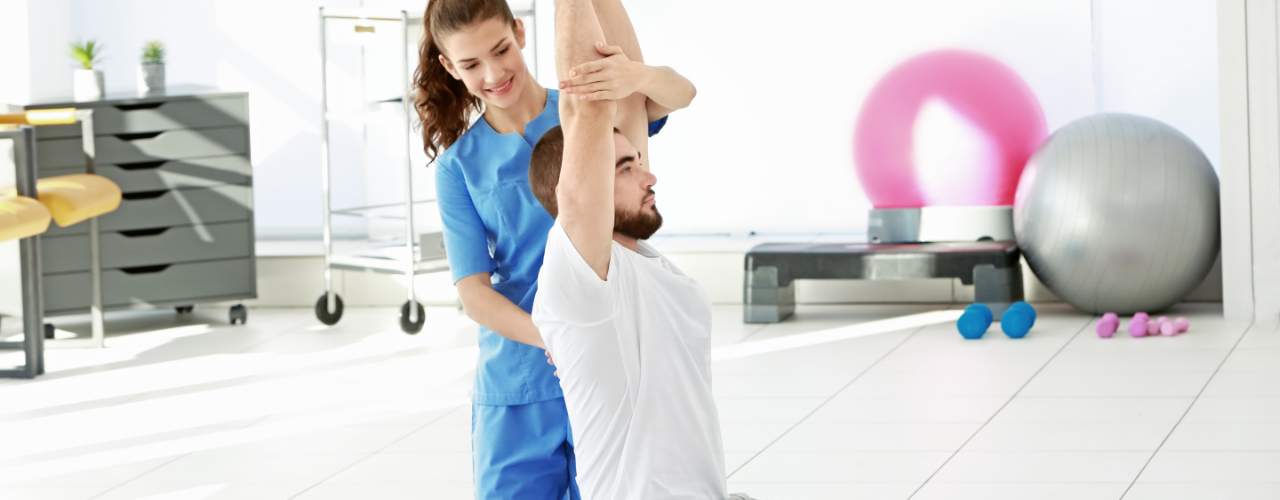Rid Yourself of Arthritic Aches and Pains with PT Treatments

Physical therapy is extremely beneficial for arthritis sufferers, as it not only relieves pain but also decreases the risk of sustaining an arthritis-related injury.
Do you experience stiff and achy joints when you wake up in the morning? Does that pain seem to disappear as you move throughout the day? Are your joints sensitive and painful to the touch? Do you hear “popping” or “clicking” sounds when moving the affected joint(s)? If you can relate to these issues, you may be living with arthritis.
Millions of Americans are diagnosed with arthritis, and it is an extremely common condition to develop. Many people wait until their arthritis becomes severe before seeking the help of a physical therapist. Full Potential Physical Therapy can help you before it reaches that point!
Contact Full Potential Physical Therapy in Holland, MI today at (616) 392-2172. Or, click here to request a consultation and discuss how our treatment plans can help manage your arthritic pains, once and for all.
Do You Have Arthritic Symptoms?
The Arthritis Foundation states that approximately 50 million people live with arthritis. As the leading cause of disability across the U.S., it is important to understand the symptoms associated with it.
Osteoarthritis wears down the joints. This can be due to the natural deterioration of age, or from repetitive overuse as mentioned earlier. When this happens, the cartilage within the joints no longer acts as a cushion and shock absorber, resulting in the bones rubbing together. This causes mild to severe pain, in addition to tight and sore joints.
Rheumatoid arthritis can cause pain and swelling, and in severe cases may lead to joint deformity or bone erosion. This leads to weakness, stiffness, tenderness, or “pins and needles” sensations.
The daily life of someone living with arthritis can be greatly limited without the help of physical therapy. Arthritis can make it difficult to work, exercise, and do the activities you love.
The Two Main Types of Arthritis
Osteoarthritis
Osteoarthritis, the most commonly experienced type of arthritis, is fairly easy to diagnose. There are a couple of different ways in which osteoarthritis can develop, such as a sudden injury, or with gradual “wear and tear” over time.
Sometimes, osteoarthritis can even develop from a seemingly healed injury. Imagine this: you were a football player in school who experienced a harsh knee collision during a game. You get treated for the injury, recover, and return to your sport. However, you continue to notice the lingering pains of your knee injury, even after your football career ends. After an injury heals, it is still possible for arthritis to eventually develop in that affected area. Especially if it still experiences the same repetitive overuse after the fact.
This can also be said for labor-intensive careers. Let’s say you’re a carpenter or roofer, whose job requires the repetitive swinging of tools. This puts your joints at a higher risk of developing osteoarthritis later in life.
Rheumatoid
Rheumatoid arthritis, the second most commonly experienced type of arthritis, is not as well understood as osteoarthritis. Referred to as “inflammatory arthritis,” it develops as an autoimmune response, resulting in painful inflammation. If you are living with rheumatoid arthritis, it means that your immune system sees your joints as a threat and subsequently decides to attack them.
Research for the causes of rheumatoid arthritis is still ongoing; however, several experts have come to believe that one’s hormones, medical history, and environment could all be contributing factors to the development of this condition. Since it develops as an autoimmune response, it is also common for the same joints to be affected on both sides of the body.
How Will Physical Therapy Help My Arthritis?
Physical therapy can benefit anyone who is suffering from the aches and pains of arthritis. At your initial appointment, you will undergo a physical evaluation to determine the best course of treatment for your needs. Treatment plans will be dependent upon the severity of your conditions and any health risks you may have.
At Full Potential Physical Therapy, we are dedicated to providing you with the best quality of treatment. We design individualized treatment plans for the specific recovery goals of each patient. Treatment plans could include targeted techniques aimed at relieving your arthritis pain symptoms and restoring your joint function.
These may include any combination of exercises, stretches, ice and heat therapies, manual therapy, ultrasound, or weight management techniques as our physical therapist deems fit.
Looking for Relief?
Contact Us!
If you have been living with arthritis, or you think you may be experiencing arthritic symptoms, don’t hesitate to contact our Holland, MI physical therapy office for a consultation today. We’ll help you manage your arthritic pains so you can get back to living the life you want to live!
A Better Life is Only Four Steps Away
Physical therapy can be an unfamiliar experience for many. To orient new patients to the process, we have divided their rehab journey into four segments called “The Four Phases of Getting Better.” It is important to note that while there are four phases utilized over the course of your care, they are not totally separate. They move gradually toward greater strengthening and function, which is the end goal to return confidently to the life you desire to live.1
Pain Relief
The first focus in getting better is pain relief. After your evaluation, your physical therapist will use hands-on techniques or manual therapy, light therapeutic exercise, and education on how to modify your activity and posture in order to give you more control over your pain. In this stage, modalities like ice, heat, myofascial release, electric stimulation and kinesiotape may be used.
2
Improve Mobility/Flexibility
The second step in this method is to improve mobility and flexibility. Your therapist will design a progressive program of range of motion and light stretching to restore mobility and reduce pain.
3
Improve Strength/Control
In the third step of this method, muscle weakness will be addressed to help you maintain the gains and momentum you achieve through phases one and two. A thorough strengthening process is the step that gives results that last, and this will prepare you for more functional training – the final step.
4
Functional Training
Now that your pain is resolved and you have the necessary mobility and strength, your program can be advanced into functional training. Whether you are returning to work, returning to life after post-op rehabilitation, getting back into recreation or sports, or simply returning to the activities of daily life, this step helps ensure your success after graduation and empowers you to be confident in your abilities again.

Reach Your Full Potential & Live Pain-Free!
Book A Free Consultation
Book a Free Consultation Today to Find Out How Physical Therapy Can Help You Find Relief!
request an appointment
Reach Your Full Potential and Live Life Pain-Free! Request an Appointment to Get Started Today!





